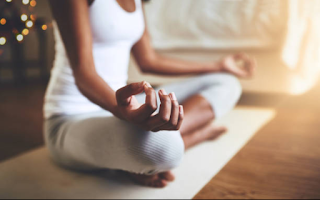Yoga - Yoga Asana , yoga for beginners , Yoga classes
Introduction of Yoga
"Yoga is not an ancient myth buried in oblivion . It is the most valuable inheritance of present . It is the essential need of today and the culture of tomorrow "
- Swami Satyananda Saraswati
The word yoga means "UNITY" or oneness and is derived from sanskrit word ' Yuj" which means "to join" this unity or joining is described in spiritual terms as the union of the individual consciousness with the universal consciousness.
The science of yoga begins to work on the outermost aspects of the personality, the physical body, which for most people is a practical and familiar yoga moves on the mental and emotional levels.
Branches of yoga :- Raja, Hatho, Jnana. Karma, Bhakti, Mantra, Kundalini and Laya.
Hathasya prathamaangatvaadaasanam pooruamuchyate
Kuruyattadaasanam sthairyamaarogyan chaanglaaghavan
Kuruyattadaasanam sthairyamaarogyan chaanglaaghavan
Means;- Prior to everything, asana is spoken of as the first part of hatha yoga .Having done asana, one attains steadiness of body and mind freedom from disease and lightness of the limbs.
Yoga Asana
Asana means a state of being in which one can remain physically and mentally steady, calm, quiet and comfortable.
"Sthiram sukham aasanam"
- That position which is comfortable and steady.
Read this before starting Yoga (aasana) practice
Brearthing : Always breathe through the nose. Try to coordinate the breath with the asana practice.
Awareness : This is an essential for the You. The purpose of asana practice is to influence , integrate and harmonise all the levels of being: Physical, park , mental, awareness is essential in order to receive optimum benefits from practices.
Relaxation :
Shavasan maybe performed at any point during asana practice especially when you feeling physically or mentally tired. It should also practiced on completion of the asana session .
Shavasan maybe performed at any point during asana practice especially when you feeling physically or mentally tired. It should also practiced on completion of the asana session .
Sequence : After completing shatkarma asana should be done followed by pranayam the prathyhara and dharna which led to meditation.
Counterpose : When practicing the middle and advanced group of asanas particularly, it is important that the programme is structured so that backward bends are followed by the forward bends and vice-versa, and the whatever is practiced on one side of the body is repeated on the other side. This bring balanced state of body.
Time of practice : A very frequently asked question. You can practice at any time of the day except after meals. The best time however, is the two hours around sunrise. In the evening the two hours around sunset is also favourable time.
Place of practice :
Place matters alot while performing asana. Choose a well-ventilated room where it is calm and quiet. You can practice outdoors also but take care that surroundings should be pleasant.
Place matters alot while performing asana. Choose a well-ventilated room where it is calm and quiet. You can practice outdoors also but take care that surroundings should be pleasant.
- Do not practice in a strong wind , in the cold, in the air that is dirty, smoky or which carries an unpleasant odours
- Do not practice in the vicinity of furniture or anything that prevents free falls to the ground.
Use a folded blanket of natural material the practices as this will act as an insulator between the body and the earth.
- Do not use a mattress which is spongy or filled with air. This affect your spine.
- Remove spectacles, wristwatches and any jewellery.
Detoxification : Choose one time daily to go to the toilet before doing asanas. The stomach should be empty while doing asanas. One of the reason why early morning practice is recommended is that the stomach is sure to be empty.
- Do not use laxative drugs.
- Contrary to popular belief, yoga does not say that a vegetarian diet is essential although in the higher stages of practice it is recommended to take non-veg.
- Avoid food which cause acidity or gas .
- Specific dietary restrictions are recommended for certain diseases.
- Never exert undue force while doing asanas.
No age limitation sets in yoga all age group, male and female practice asanas.
Conta-indications : If you are dealing with fractured bones, chronic diseases such as stomach ulcer, tuberculosis or hernia, should consult a yoga teacher or doctor before practice asanas.
Sunbathing :
Never practice asanas after a long period of sunbathing as the body period of sunbathing as the body will be overheated.
Never practice asanas after a long period of sunbathing as the body period of sunbathing as the body will be overheated.
Terminations of asana : If you feel excessive pain in any part of body immediately stop asana.
- Do not stay in an asana if discomfort is feel.



















